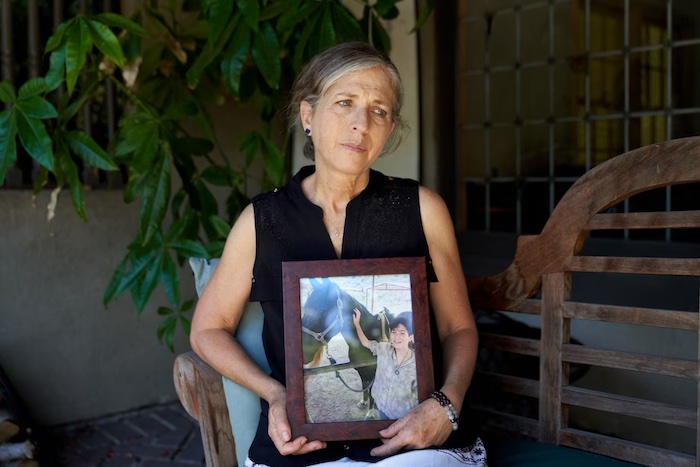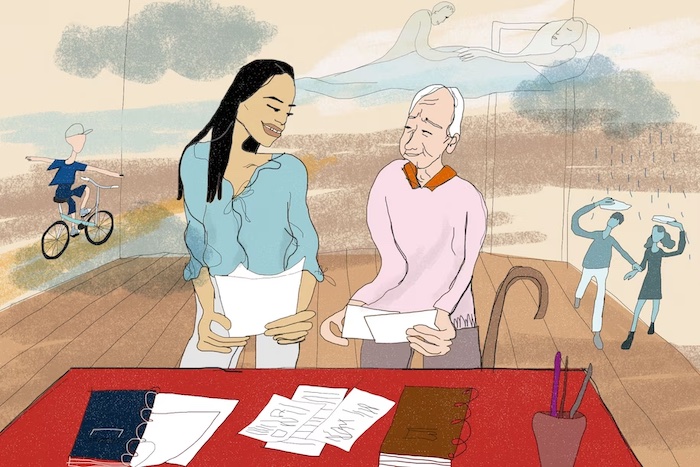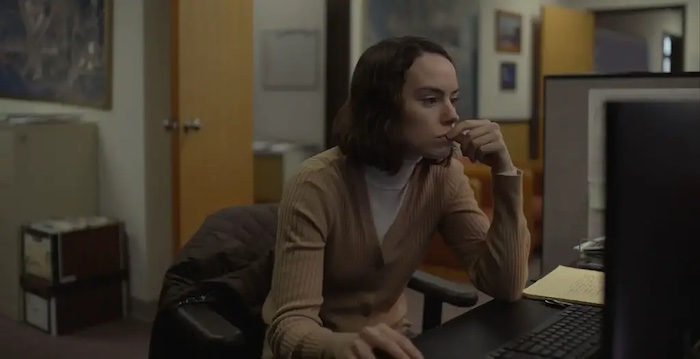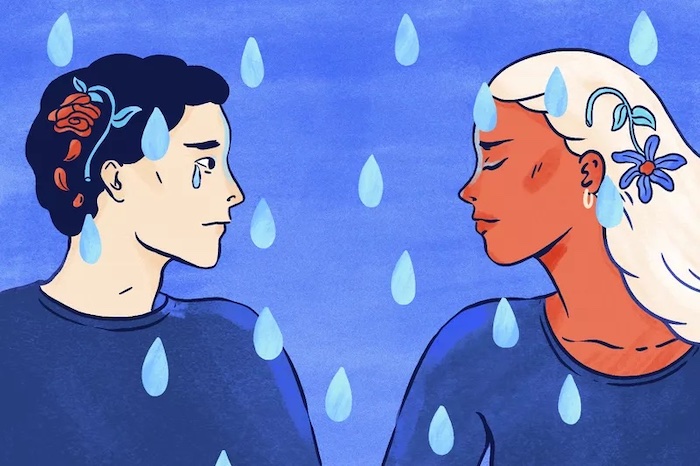— Suicidal thoughts can feel scary and isolating, but you don’t have to cope with them alone. Here’s how to get the help you need.

Suicidal thoughts — also called suicidal ideation — include wishes, thoughts, and preoccupations with death and suicide, according to StatPearls.
Suicidal thoughts can fluctuate in intensity and duration. They tend to follow a “waxing and waning” pattern, where they’re more intense at certain times and level out — or possibly subside altogether — during others, the authors of the report noted. Sometimes they’re fleeting, passive wishes to simply cease to exist, and sometimes they’re persistent and overwhelming thoughts of harming oneself.
“When such thoughts first occur, they often feel intrusive and frightening,” says Amy Mezulis, PhD, a licensed clinical psychologist and co-founder and chief clinical officer at Joon Care, a mental health care platform for teens and young adults. “For some individuals who struggle with depression or suicidal thoughts for a long time, they can start to feel almost normal,” she says.
The types of suicidal thoughts one experiences can vary from person to person and are considered either passive or active in nature, per the aforementioned report.
Passive Suicidal Thoughts
Passive suicidal thoughts are when someone loses the motivation to live, but they do not have a plan in place to end their life, according to Salt Lake Behavioral Health in Salt Lake City, Utah. “These can be thoughts such as wondering what it would be like to be dead or to not wake up in the morning,” says Dr. Mezulis.
Even though someone with passive suicidal thoughts doesn’t have a plan in place to end their life, these thoughts could eventually progress into active suicidal thoughts and lead to a suicide attempt, per the aforementioned StatPearls report. Passive suicidal thoughts should be taken very seriously.
Active Suicidal Thoughts
Suicidal thoughts are considered active when someone loses the will to live and has a plan in place to end their life, per Salt Lake Behavioral Health.
“Active suicidal thoughts refer to thoughts that focus on methods and plans for dying by suicide,” says Mezulis. “These can be thoughts such as considering different suicide means or making a mental plan for dying by suicide.”
Causes and Risk Factors for Suicidal Thoughts
“Suicide is complex and there is never a single cause,” says Jill Harkavy-Friedman, PhD, the senior vice president of research for the American Foundation for Suicide Prevention. “There are many potential contributors that may combine to create or increase risk.”
Factors that could raise your risk for suicidal thoughts, per Mayo Clinic, include:
- Feeling hopeless, worthless, lonely, or socially isolated
- Experiencing a stressful life event, such as the loss of a loved one or financial problems
- Having a mental health condition like depression
- Having a substance use disorder
- Having a chronic disease, chronic pain, or terminal illness
- Having a history of physical or sexual abuse
- Family history of suicide
- Having a family history of mental health conditions
- Being lesbian, gay, bisexual, or transgender without a supportive family or living in hostile surroundings
- Having prior suicide attempts
Signs and Symptoms of Suicidal Thoughts
The warning signs that someone may be having suicidal thoughts, per Mayo Clinic, include:
- Talking about suicide and openly wishing to die or be dead
- Obtaining the means to end one’s life, such as stockpiling pills or purchasing a gun
- Withdrawing socially and expressing a strong desire to be alone
- Having mood swings, such as feeling emotionally high one day but down and discouraged the next day
- Fixating on death, dying, or violence
- Feeling hopeless or trapped in a situation
- Increased drug or alcohol use
- Changing their usual routine, including sleeping and eating habits
- Experiencing severe anxiety or personality changes
- Engaging in risky behavior, such as reckless driving or substance use
- Giving away personal belongings, drafting a will, or getting their affairs in order when there’s seemingly no logical reason for doing so
- Saying goodbye to friends and family as if they will never be seen again
How Suicidal Thoughts Affect Your Health and Well-Being
Suicidal thoughts can take a serious toll on your emotional and physical well-being, in addition to heightening your risk of dying by suicide or injuring yourself in a suicide attempt, according to the CDC.
The human brain can only process so much information at a time, says Mezulis. So when a person is experiencing constant suicidal thoughts, much of their cognitive and emotional energy is consumed by them, she says.
“That can be exhausting, both psychologically and physically,” Mazulis explains. “Persistent suicidal thoughts can impact mood and health, contributing to a cycle of negative mood and suicidal thoughts that can be difficult to interrupt.”
The most serious consequences of suicidal thoughts are attempted suicide or death by suicide. People who survive a suicide attempt can be left with serious physical damage to their bodies that can be debilitating or even permanent, according to Cross Creek Hospital in Austin, Texas. The effects can include:
- Scars
- Broken bones
- Hemorrhage, or heavy bleeding
- Organ failure
- Brain damage
- Paralysis
- Coma
Prevention of Suicidal Thoughts
Suicidal thoughts are often part of a larger issue, such as an underlying mental health condition like depression, substance use disorders, or schizophrenia, according to research. “Treating these underlying mood conditions [or other mental health conditions] can help prevent and reduce suicidal thoughts,” says Mazulis.
But not all people who experience suicidal thoughts have a mental health condition — stressful life events such as relationship problems, the death of a loved one, or eviction can lead to suicidal thoughts, too, according to the National Alliance on Mental Illness. Similarly, addressing those contributing factors (through strategies like talking to a mental health professional about those stressors and finding ways to manage the resulting feelings of distress, for instance) can help lessen suicidal thoughts, too.
Other factors that can protect against suicide and suicidal thoughts, per the CDC, include:
- Having access to high-quality, consistent healthcare for mental and physical health conditions
- Developing effective coping and problem-solving skills
- Focusing on your reasons for living, such as family, friends, or pets
- Having or developing meaningful connections with others
- Having a strong sense of cultural identity
- Getting support from friends and family
How to Cope With Suicidal Thoughts
Suicidal thoughts should always be taken very seriously. Don’t wait to get help for yourself or a loved one who’s considering suicide.
“If you feel like life is not worth living, notice changes in your thoughts and behaviors that make it hard to keep going, or you feel depressed or hopeless, it is important to trust your gut and take action,” says Dr. Harkavy-Friedman.
If you feel like you or a loved one are in imminent danger of suicide, call 911 for emergency help. For immediate crisis assistance from a trained counselor, you can reach the free, 24/7 988 Suicide and Crisis Lifeline by calling or texting 988, or the free, 24/7 Crisis Text Line by texting HOME to 741741.
If you feel you’re not in immediate danger, you should schedule an appointment to see your doctor or therapist to talk about what you’re going through, according to Mayo Clinic. They can help you determine the severity of your suicidal thoughts and come up with a treatment plan to manage them.
Treatment options for people experiencing suicidal thoughts, per Mayo Clinic, may include:
- Psychotherapy Also called “talk therapy,” psychotherapy involves working with a licensed therapist to explore the root causes of your suicidal thoughts and learn skills to help you manage your emotions.
- Medications These could include antidepressants, antipsychotics, or anti-anxiety medication if you have a mental health condition. Managing the symptoms of a condition can in turn lessen suicidal thoughts.
- Addiction Treatment If you have a substance use disorder, getting treatment for it can reduce suicidal thoughts. This could include detox, addiction treatment programs, or self-help group meetings.
Along with professional treatment, practicing self-care can help you feel better and can reduce thoughts of suicide over time, says Harkavy-Friedman. Some self-care strategies that can help are getting regular sleep, exercising, eating a nutritious diet, spending time with friends and family, and making time for things that bring you joy, she says.
You could also reach out to family members, friends, or members of a faith community, for instance, when you feel like you need support. Having a strong support system can help lower your risk for suicide, according to Mayo Clinic.
In addition, it could help to reach out to one of the suicide hotlines described above, even if you don’t feel like you’re in immediate danger. A trained crisis counselor can offer free and confidential emotional support and connect you to resources that could help.
Resources We Love
American Foundation for Suicide Prevention (AFSP)
The AFSP is committed to raising awareness about mental health and suicide, and funding research related to suicide and suicide prevention. They offer specific resources for anyone who is experiencing thoughts of suicide, has survived suicide attempts, has lost a loved one to suicide, or is worried about someone else with suicidal thoughts.
988 Suicide and Crisis Lifeline
The 988 Suicide and Crisis Lifeline provides 24/7, free, and confidential support for people in distress, suicide prevention and mental health crisis resources, and best practices for health professionals in the United States. Dial 988 to speak with a trained crisis counselor who can help you if you or a loved one is experiencing thoughts of suicide. They also have a chat tool for those who are deaf or hard of hearing or who may otherwise prefer a chat option.
National Institute of Mental Health (NIMH)
The NIMH is the lead government agency for research on mental health conditions. It provides a “Suicide Prevention” resource for people experiencing thoughts of suicide or for their loved ones.
Complete Article ↪HERE↩!










